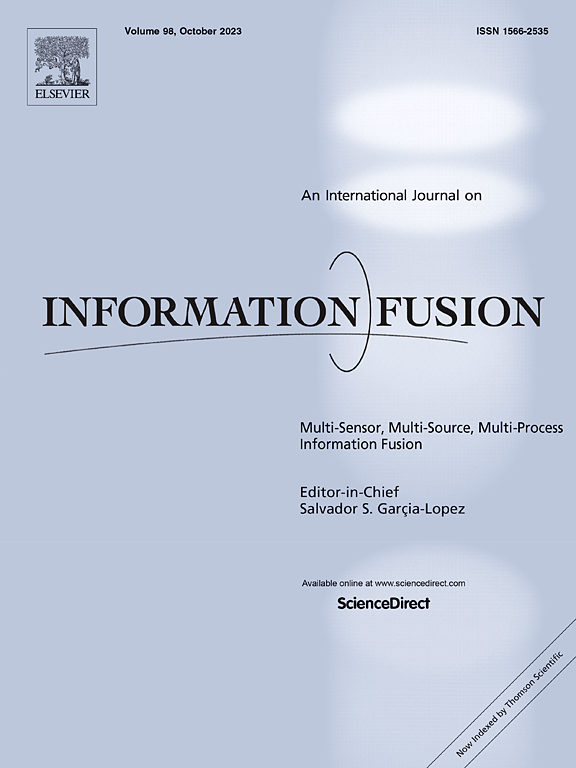Hyperspectral super-resolution via nonlinear unmixing
IF 14.7
1区 计算机科学
Q1 COMPUTER SCIENCE, ARTIFICIAL INTELLIGENCE
引用次数: 0
Abstract
Fusing a hyperspectral image (HSI) with a multispectral image (MSI) to produce a super-resolution image (SRI) that possesses both fine spatial and spectral resolutions is a widely adopted technique in hyperspectral super-resolution (HSR). Most existing HSR methods accomplish this task within the framework of linear mixing model (LMM). However, a severe challenge lies in the inherent linear constraint of LMM, which hinders the adaptability of these HSR methods to complex real-world scenarios. In this work, the LMM is extended to the generalized bilinear model (GBM), and a novel HSR method based on nonnegative tensor factorization is proposed in the framework of nonlinear unmixing. Apart from the linear part, it additionally considers the main nonlinear interactions, that is, the bilinear interactions between the endmembers. Crucially, each potential decomposition factor possesses a physical interpretation, enabling the incorporation of prior information to enhance reconstruction performance. Furthermore, an HSR algorithm has been devised specifically for scenarios where the spatial degradation operators from SRI to HSI are unknown, which undoubtedly enhances its practical applicability. The proposed methods overcome the inherent linear limitations of the LMM framework while avoiding the information loss associated with matrixizing HSI and MSI. The effectiveness of the proposed methods is showcased through simulated and real data.
通过非线性解混的高光谱超分辨率
将高光谱图像与多光谱图像融合生成具有良好空间分辨率和光谱分辨率的超分辨率图像是高光谱超分辨率研究中广泛采用的一种技术。大多数现有的高铁方法都是在线性混合模型(LMM)的框架内完成这一任务的。然而,一个严峻的挑战在于LMM固有的线性约束,这阻碍了这些高铁方法对复杂现实场景的适应性。本文将LMM扩展到广义双线性模型(GBM),并在非线性解混框架下提出了一种基于非负张量分解的HSR方法。除线性部分外,还考虑了主要的非线性相互作用,即端元之间的双线性相互作用。至关重要的是,每个潜在的分解因素都具有物理解释,从而能够结合先验信息来提高重建性能。此外,针对从SRI到HSI的空间退化算子未知的情况,设计了一种HSR算法,无疑增强了其实际适用性。所提出的方法克服了LMM框架固有的线性限制,同时避免了HSI和MSI矩阵化相关的信息丢失。通过仿真和实际数据验证了所提方法的有效性。
本文章由计算机程序翻译,如有差异,请以英文原文为准。
求助全文
约1分钟内获得全文
求助全文
来源期刊

Information Fusion
工程技术-计算机:理论方法
CiteScore
33.20
自引率
4.30%
发文量
161
审稿时长
7.9 months
期刊介绍:
Information Fusion serves as a central platform for showcasing advancements in multi-sensor, multi-source, multi-process information fusion, fostering collaboration among diverse disciplines driving its progress. It is the leading outlet for sharing research and development in this field, focusing on architectures, algorithms, and applications. Papers dealing with fundamental theoretical analyses as well as those demonstrating their application to real-world problems will be welcome.
 求助内容:
求助内容: 应助结果提醒方式:
应助结果提醒方式:


